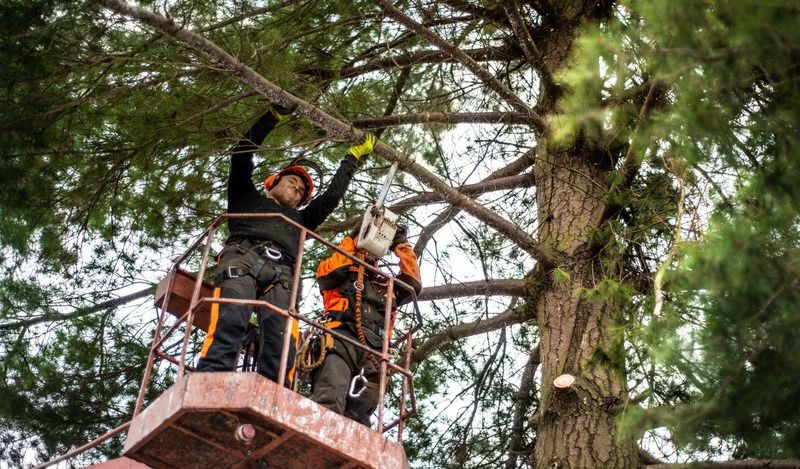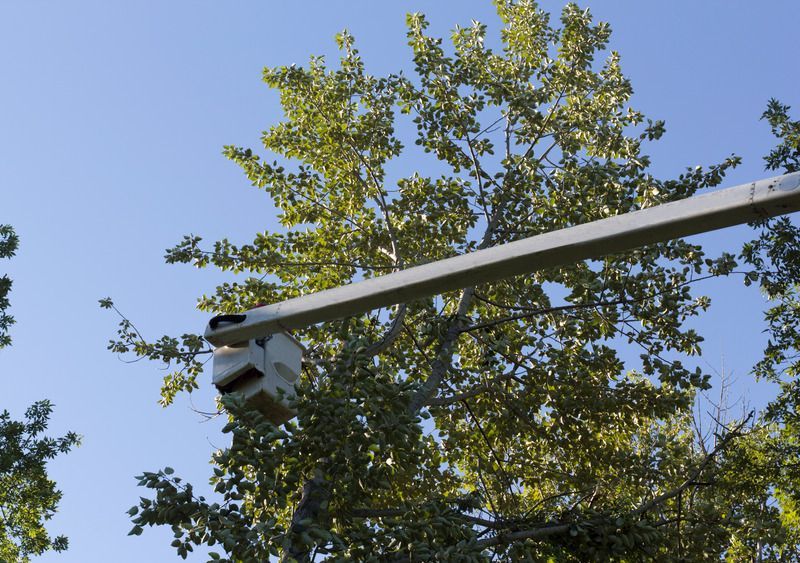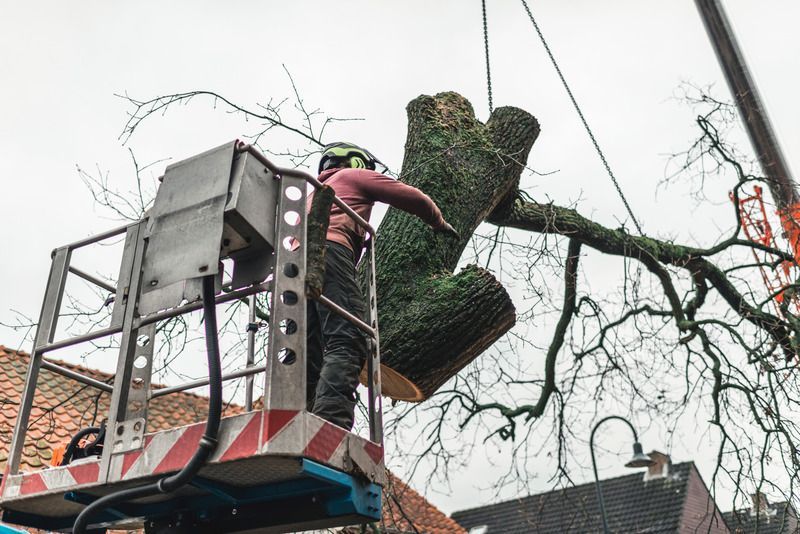Tree Removal: 5 Questions We Get All the Time
What You Need to Know About Tree Removal
When considering tree removal, it's natural to have questions and concerns. By addressing these common questions, you can gain a better understanding of tree removal processes, benefits, safety considerations, costs, and compliance with environmental regulations. Stay informed and make informed decisions when it comes to tree removal to ensure a smooth and successful experience.
Understanding the Tree Removal Process
The tree removal process involves several key steps that are essential to ensure safe and efficient removal of trees from a property. Understanding these steps can help homeowners make informed decisions when it comes to tree removal.
- Assessment: The process begins with a thorough assessment of the tree and its surroundings. A certified arborist will evaluate the tree's health, size, location, and any potential hazards it may pose.
- Planning: Once the assessment is complete, a detailed plan for the tree removal is developed. This plan includes factors such as the equipment needed, safety measures to be implemented, and the best approach for removing the tree.
- Permitting: In some cases, tree removal may require permits from local authorities, especially for trees located in protected areas or near power lines. The professional tree removal service will handle the permitting process to ensure compliance with regulations.
- Tree Removal: During the actual removal process, the tree is carefully cut down in sections to avoid damage to property and minimize safety risks. Specialized equipment such as chainsaws, ropes, and cranes may be used to safely bring down the tree.
- Clean-up: Once the tree is removed, the debris and leftover branches are cleared from the property. Professional tree removal services ensure thorough clean-up, leaving the area free of tree remnants and ready for landscaping or future use.
By understanding the tree removal process, homeowners can appreciate the complexity and expertise required for safe and effective tree removal. Hiring a professional tree removal service ensures that the process is carried out efficiently and with minimal disruption to the property.
Importance of Hiring a Professional Tree Removal Service
Hiring a professional tree removal service is necessary to ensure the job is done safely and efficiently. Professionals have the expertise and equipment to handle various tree removal scenarios, from simple tree trimming to complex tree felling. They understand the potential risks involved in tree removal and take necessary precautions to protect both property and individuals nearby.
Professional tree removal services are well-versed in local regulations and safety standards governing tree removal practices. By hiring experts, you can rest assured that the tree removal process will be conducted in compliance with these regulations, minimizing any potential legal liabilities.
In addition to expertise and adherence to safety standards, professional tree removal services offer convenience and peace of mind. They take care of all aspects of the tree removal process, from obtaining permits to cleaning up the debris afterwards. Hiring professionals saves you time and effort while ensuring the job is done right the first time.
Furthermore, professional tree removal services are equipped with the proper tools and equipment needed to tackle tree removal tasks efficiently. They have the knowledge and experience to determine the best approach for removing trees based on factors such as tree size, location, and surrounding structures. This expertise helps minimize the risk of property damage or personal injury during tree removal.
Overall, hiring a professional tree removal service is a wise investment that ensures the job is completed safely, legally, and with minimal hassle. When it comes to tree removal, trust the experts to handle the job professionally and effectively.
Safety Measures During Tree Removal
When it comes to tree removal, safety should always be the top priority. A professional tree removal service will follow strict safety measures to ensure a safe and successful removal process. Here are some key safety measures that are typically employed during tree removal:
- Assessment and Planning: Before any tree removal work begins, a thorough assessment of the tree and its surroundings is conducted. This helps identify potential hazards, such as power lines, nearby structures, or obstacles that could affect the removal process. Proper planning is essential to minimize risks and ensure a safe operation.
- Proper Equipment and Tools: Utilizing the right equipment and tools is crucial for safe tree removal. Professional tree removal companies have specialized equipment, such as chainsaws, ropes, harnesses, and cranes, to safely cut down and remove trees. These tools are used by trained professionals who know how to operate them safely.
- Protective Gear: Safety gear is essential for anyone involved in tree removal. Workers should wear personal protective equipment, including helmets, gloves, eye protection, and sturdy footwear, to protect themselves from potential injuries. Safety harnesses are also used when working at heights to prevent falls.
- Clear Communication: Effective communication among the tree removal team is vital to ensure a smooth and safe operation. Clear communication helps coordinate actions, anticipate risks, and implement safety procedures effectively. Everyone involved in the tree removal process should be aware of their roles and responsibilities.
- Controlled Tree Removal: Tree removal is a delicate process that requires precision and control. Professionals use techniques like directional felling and rigging to safely guide the tree's fall and prevent damage to nearby property. Controlled tree removal minimizes risks to workers and bystanders and ensures a successful outcome.
- Cleanup and Disposal: Once the tree is removed, the cleanup process begins. Branches, logs, and debris are carefully cleared from the site to prevent tripping hazards and ensure a clean finish. Proper disposal of tree waste is also part of the safety process, as it reduces the risk of accidents or environmental damage.
By following these safety measures during tree removal, professional tree removal services prioritize the well-being of their team, clients, and the environment. Safety should never be overlooked when it comes to tree removal, and hiring a professional ensures that the job is done safely and efficiently.
Cost Factors in Tree Removal Services
When it comes to tree removal services, understanding the various cost factors involved is crucial for both service providers and customers. The cost of tree removal can vary significantly depending on several key factors that influence pricing. Here are some important aspects to consider when evaluating the cost of tree removal services.
- Tree Size and Complexity: One of the primary factors that influence the cost of tree removal is the size and complexity of the tree. Larger trees or those with multiple branches and dense foliage can be more challenging and time-consuming to remove safely. As a result, the cost of removing such trees is usually higher compared to smaller, less complex trees.
- Tree Location: The location of the tree plays a significant role in determining the cost of removal. Trees located near buildings, power lines, or other structures require extra precautions and specialized equipment to prevent property damage during removal. Trees in challenging locations may also incur additional costs for labor and equipment needed for safe extraction.
- Tree Health and Condition: The health and condition of the tree can also impact the cost of removal. Diseased, damaged, or decaying trees are more unstable and pose higher risks during removal. Professional arborists may need to take extra safety measures or use specialized techniques to safely eliminate such trees, which can increase the overall cost of the removal service.
- Access and Equipment Needed: The accessibility of the tree removal site is another cost factor to consider. If the tree is located in an area with limited access or challenging terrain, additional equipment such as cranes, aerial lifts, or climbing gear may be required for safe removal. The need for specialized equipment and increased labor due to difficult access can add to the total cost of the tree removal service.
- Permit Requirements: In some cases, tree removal may require permits from local authorities or compliance with specific regulations. Obtaining necessary permits or adhering to legal requirements can incur additional costs that need to be factored into the overall price of the tree removal service.
Understanding these cost factors and collaborating closely with your tree removal service provider can help you anticipate and plan for the total expenses associated with removing trees from your property. By considering these key aspects, you can make informed decisions about tree removal and ensure a safe and efficient removal process.
Environmental Impact and Regulations
Environmental impact assessments and adherence to regulations are core to our sustainability commitment. Our team ensures every removal operation considers the ecosystem, wildlife habitats, and local regulations, striving to minimize ecological disruption. From obtaining necessary permits to employing eco-friendly disposal practices, we prioritize environmental preservation in every step of the tree removal process. Let us handle your tree removal needs responsibly and sustainably.
-Red Wolves Tree Service
serving Jonesboro, AR and the surrounding areas
You might also like
Red Wolves Tree Service Blog
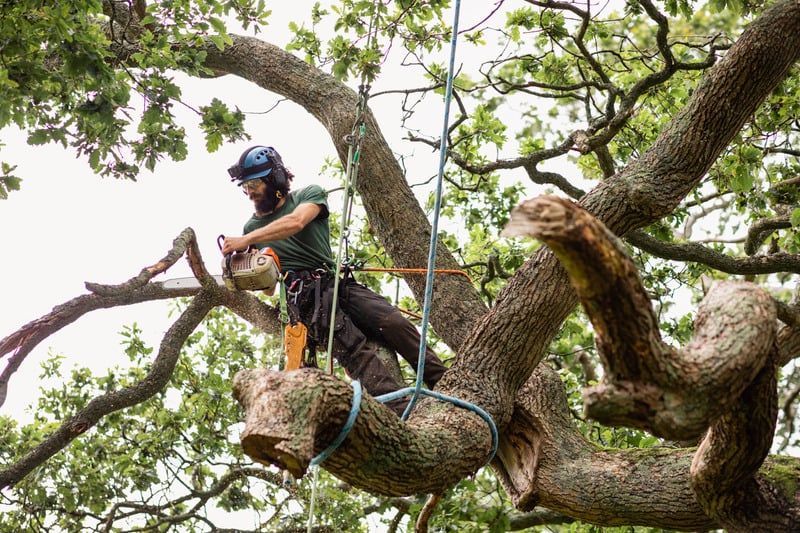
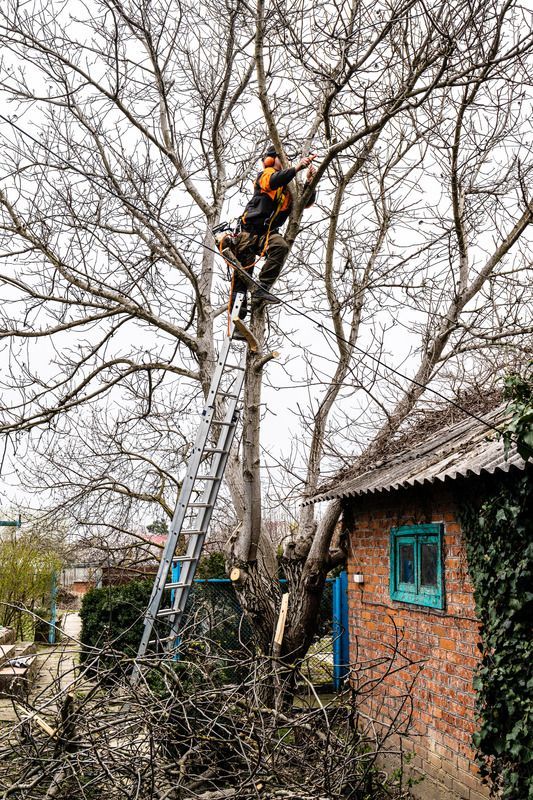

We will get back to you as soon as possible
Please try again later
Professional Tree Removal in
Jonesboro, AR
Call today for your Free Tree Service Quote
All Rights Reserved | Red Wolves Tree Service
